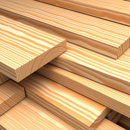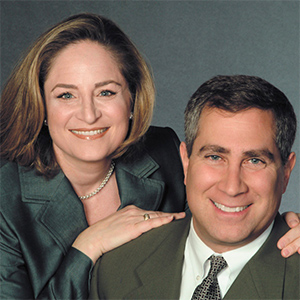Home & Leisure
/ArcaMax

Ask the Builder: Save thousands of dollars by installing luxury vinyl plank
I found myself driving through the breathtaking sheer granite walls of Franconia Notch in New Hampshire last Sunday. Cannon Mountain was on my left, and Mt. Lafayette was on my right. I was on my way to the quaint community of Sugar Hill to conduct an in-person consultation for a single mother.
The young woman was considering purchasing a house...Read more

Ask the Builder: The bones under your roof’s shingles
My guess is you give very little thought to the roof over your head, other than worrying about whether it will develop a leak. It’s safe to say you don’t lose a minute’s sleep thinking your roof will collapse. You can thank great carpenters, structural engineers, architects and, to a large extent, the modern building code for the peaceful ...Read more

Ask the Builder: Why maintenance matters
It all started with a chimney, of all things. Last I was hired by a woman who lives in a quaint small New Hampshire town just 50 miles north of me. She wanted me to review a house inspection report. She had put in an offer on a cozy little home.
This column should resonate with you no matter who you are. You may reside in your own home or live ...Read more

Ask the Builder: The most versatile power tool
I found myself entranced by a video several weeks ago. Shoyan, a master carpenter who lives in Japan, chronicled the construction of a simple residential house that was a mix of Japanese construction methods and Western amenities.
I was in awe of Shoyan’s skills and attention to detail. He employed precision you might see a master ...Read more

Ask the Builder: A magic all-purpose cleaner
Do you struggle and work too hard to get things clean around your home? A plethora of cleaning products assaults you at the grocery store and in TV commercials. I’ve tried many of them, but 30 years ago I was lucky enough to discover the best all-purpose cleaner while doing research for a deck sealer column.
I happened to ask this question ...Read more

Ask the Builder: Which water lines are right for your home?
I’ve been a master plumber since age 29. I know, it might seem odd to you that a builder is also a plumber. I was attracted to plumbing for several reasons. Designing a plumbing system is a fun and challenging three-dimensional puzzle. I still draw 3D riser diagrams for homeowners and builders. The drawings allow them to obtain plumbing ...Read more

Ask the Builder: Gutter guard facts you need to know
Do you attend home and garden shows? These events are almost always held in the spring. They’re a great place to see new products for both the interior and exterior of your home.
I recall 30 years ago, when the gutter guard industry began to gain momentum. This was just after I started writing this syndicated column. New styles and designs of...Read more

Ask the Builder: Maintenance-free decks? Yeah, right!
I gave my electric pressure washer a vigorous workout this weekend. I cleaned 1,100 square feet of composite decking, 100 feet of guardrails, and a 16-foot long staircase. The project spanned two days. The decking I cleaned was marketed years ago as being maintenance-free. Bah humbug!
Allow me to provide some context. I remember when I was a ...Read more

Ask the Builder: Avoid common DIY plumbing mistakes
I did an in-person inspection consultation recently. A man purchased a 50-year-old home next to a ski resort. He and his family are avid snow skiers and were tired of renting expensive condominiums. He wanted my opinion about the condition of the house and how to schedule remodeling work that might span two or three years.
I’m not sure of how...Read more

Ask the Builder: Erector set stairs in an hour
You probably give little thought to the stairs you go up or down to reach different levels of your home, deck or patio. I’ll wager that if I handed you a measuring tape, a framing square, a pencil and a level, you’d scratch your head and not know where to start the layout required to build a safe set of code-compliant stairs.
The good news ...Read more

Ask the Builder: Preventing cracks in ceramic floor tile
Ceramic floor tile has a rich legacy as a durable flooring material. You’ve undoubtedly walked across it in countless public buildings. Hotel lobbies, commercial buildings and even my own previous parish church sported this artificial stone product. The tile in my church was over 100 years old and it looked perfect. Do you recall ever seeing a...Read more

Ask the Builder: Get your home ready for fiber optic
I’m guessing you log onto the internet each day. I travel the information superhighway all day long as part of my business. Fiber optic cables have now been extended throughout my small town in New Hampshire, and I’m ecstatic about their arrival. I remember using a 300-baud modem back in the 1980s. It would transmit text via telephone lines ...Read more

Ask the Builder: Why your exterior paint peels and flakes
Do you get frustrated when the expensive exterior paint you use peels, flakes or cracks in just a few years? You’re not alone. I’m about to survey my thousands of newsletter subscribers. I’m willing to bet you a two-step mocha-chip ice cream sundae that a majority of them suffer as you do.
I’m convinced your disappointment can be traced...Read more




























